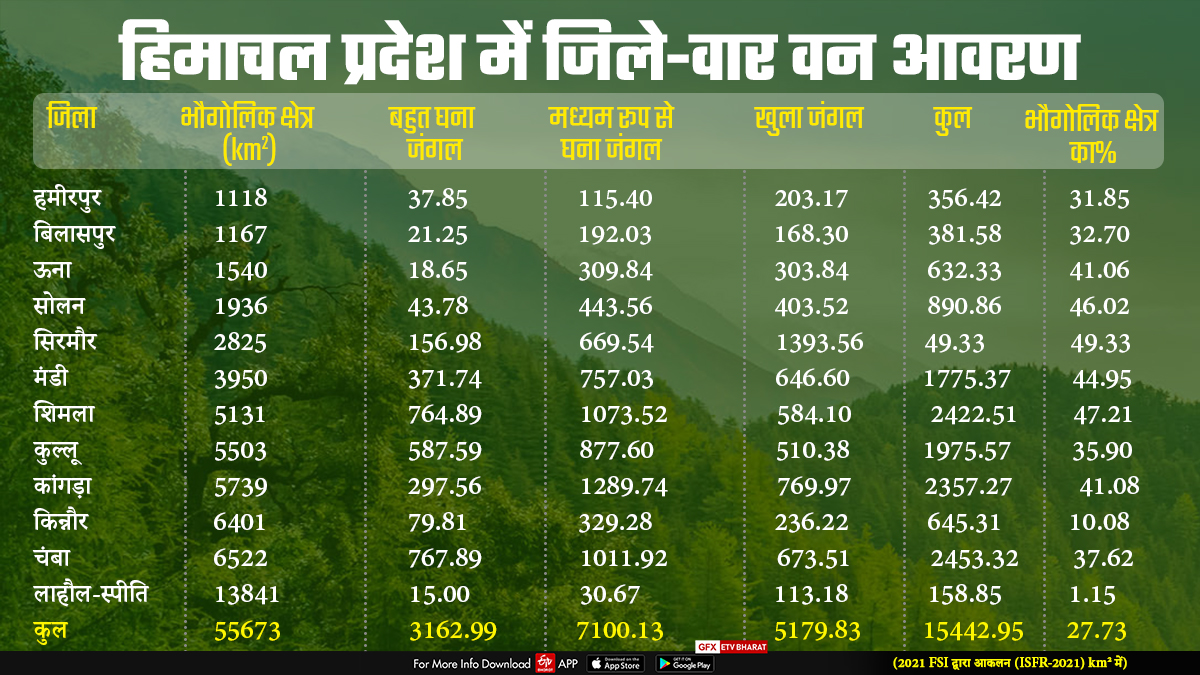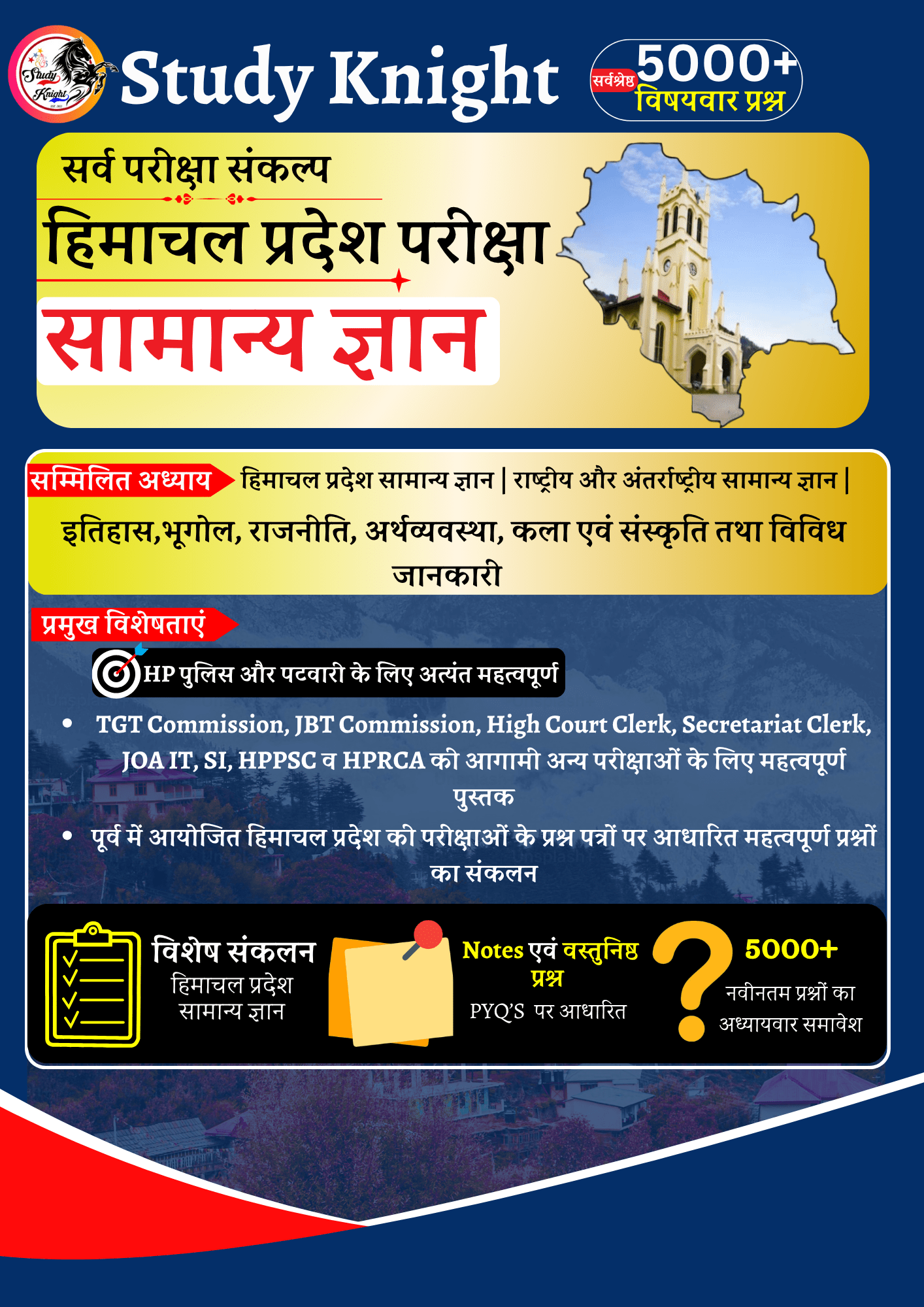Classification and Types of Forests in Himachal Pradesh: A Detailed Overview
हिमाचल प्रदेश में वनों का वर्गीकरण उनके भौगोलिक स्थान,जलवायु और ऊंचाई केअनुसार किया जाता है।
Note: – The information provided below is taken from the official website of the Himachal Forest Department (https://hpforest.gov.in/forest) and has been rewritten for better understanding.Additionally, five questions have been included.

हिमाचल प्रदेश
राज्य ट्रांस-हिमालयी और हिमालयी जैवभौगोलिक क्षेत्रों में स्थित है। रॉजर्स एट अल., (2000) द्वारा भारत के जैवभौगोलिक क्षेत्रों के वर्गीकरण
के अनुसार इन क्षेत्रों में तीन जैविक प्रांत शामिल हैं:
- ट्रांस हिमालय –
“लद्दाख पर्वत (1ए)” - ट्रांस हिमालय –
“तिब्बत पठार (1बी)” - उत्तर-पश्चिम हिमालय (2ए)
- पश्चिम हिमालय (2बी)
शिवालिक, पश्चिमी हिमालय और ट्रांस-हिमालयी क्षेत्र की उपस्थिति
ने राज्य को विविध पारिस्थितिक तंत्रों से आशीर्वाद दिया है जो समृद्ध जैव विविधता का निवास हैं। राज्य का वन आवरण 15,443 वर्ग किलोमीटर आंका गया है, जो कुल भौगोलिक क्षेत्र का 27.73 प्रतिशत है। कानूनी रूप से वर्गीकृत दर्ज वन क्षेत्र 37,948 वर्ग किलोमीटर क्षेत्र में फैला हुआ है, जो राज्य के भौगोलिक क्षेत्र का 68.16 प्रतिशत है। चैंपियन और सेठ (1968) द्वारा वनों के वर्गीकरण के अनुसार 8 वन प्रकार और 37 वन
उप-प्रकारों की उपस्थिति से वन
पारिस्थितिकी तंत्र की विविधता का उदाहरण मिलता है। हिमालयी नम शीतोष्ण वन (समूह 12) सभी वन प्रकारों में सबसे बड़े क्षेत्र पर कब्जाकरता है।
In Himachal Pradesh, forests are classified based on their geographic location, climate, and elevation. The state’s diverse ecological zones contribute to its rich biodiversity. Here’s an overview of the forest classification in Himachal Pradesh:
Forest Classification in Himachal Pradesh
Geographic Regions
Himachal Pradesh is situated within the Trans-Himalayan and Himalayan biogeographic regions. According to the classification by Rogers et al. (2000), the following biogeographic provinces are included:
Trans-Himalaya:
- Ladakh Range (1A)
- Tibet Plateau (1B)
2. Himalaya:
- North-Western Himalaya (2A)
- Western Himalaya (2B)
The presence of Shivalik, Western Himalaya, and Trans-Himalayan regions has blessed the state with diverse ecosystems and rich biodiversity.
Forest Cover
The forest cover in Himachal Pradesh is estimated to be 15,443 square kilometers, which is 27.73% of the total geographical area. Legally classified forest areas span 37,948 square kilometers, covering 68.16% of the state’s geographical area. According to the classification by Champion and Seth (1968), the state’s forests can be divided into 8 forest types and 37 forest sub-types. The Himalayan Moist Temperate Forest (Group 12) occupies the largest area among all forest types.
Key Forest Types and Their Locations
Sub-Mountainous or Sub-Tropical Region:
- Geographic Location: The southernmost region of the state, including the Shivalik Hills, doon valleys, and lower foothills of the Himalayas.
- Districts: Chamba, Kangra, Mandi, Bilaspur, Solan, and parts of Sirmaur.
- Major Forest Types: Sal, riverine Khair and Shisham, Chir Pine, Dry Deciduous Forests, and Lower Moist Broad-Leaved Forests.
Mountainous or Temperate Region:
- Geographic Location: Upper foothills of the lower Himalayas, Middle Himalayas, and lower parts of the Higher Himalayas.
- Districts: Chamba, Kangra, Bilaspur, Mandi, Kullu, Shimla, Solan, Sirmaur, and parts of Kinnaur.
- Major Forest Types: Ban Oak, Kharsu, Moru Oak, Deodar, Blue Pine, Fir, Spruce, Chir Pine, and Mixed Broad-Leaved Forests.
Sub-Alpine and Alpine Region:
- Geographic Location: Upper slopes of the lower and middle Himalayas, High Himalayas, and southern slopes of the Trans-Himalaya.
- Districts: Chamba, Kangra, Lahaul and Spiti, Kullu, Shimla, and parts of Kinnaur.
- Major Forest Types: High Altitude Blue Pine, Deodar, Spruce, Alder, Birch, Rhododendron Forests, and Moist Alpine Shrubs.
Trans-Himalayan Region:
- Geographic Location: Inner dry valleys of the main Himalayas and Trans-Himalaya.
- Districts: Chamba, Lahaul and Spiti, Kullu, Shimla, and parts of Kinnaur.
- Major Forest Types: Chilgoza Pine, Dry Cedar, Juniper, and Alpine Shrubs.
Forest Resources
Timber Resources:
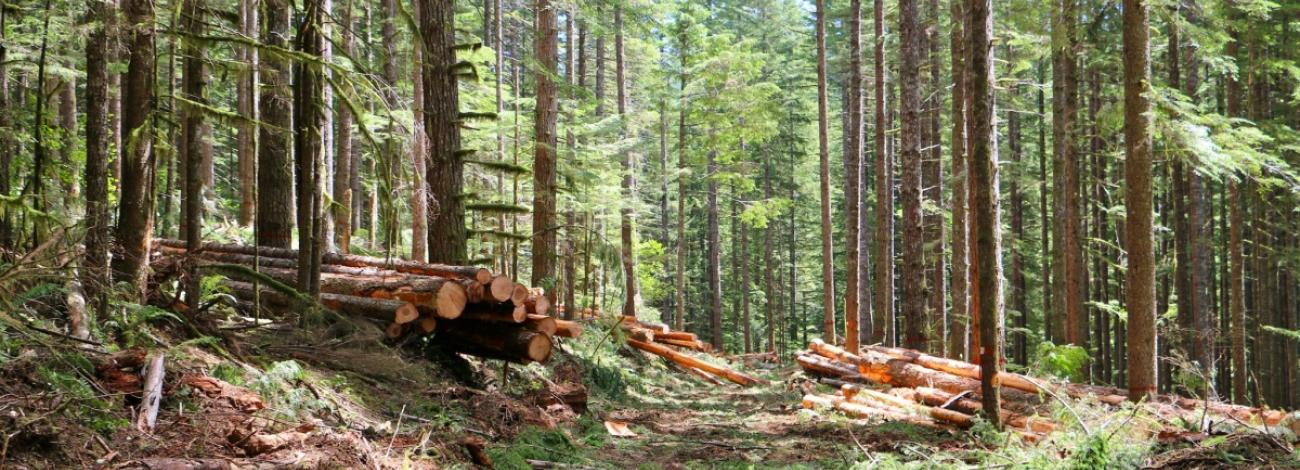
- Cedrus deodara
- Pinus roxburghii
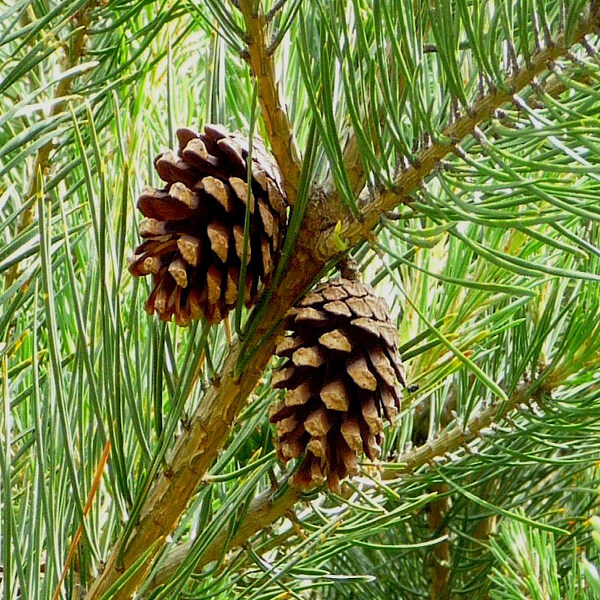
- Picea smithiana
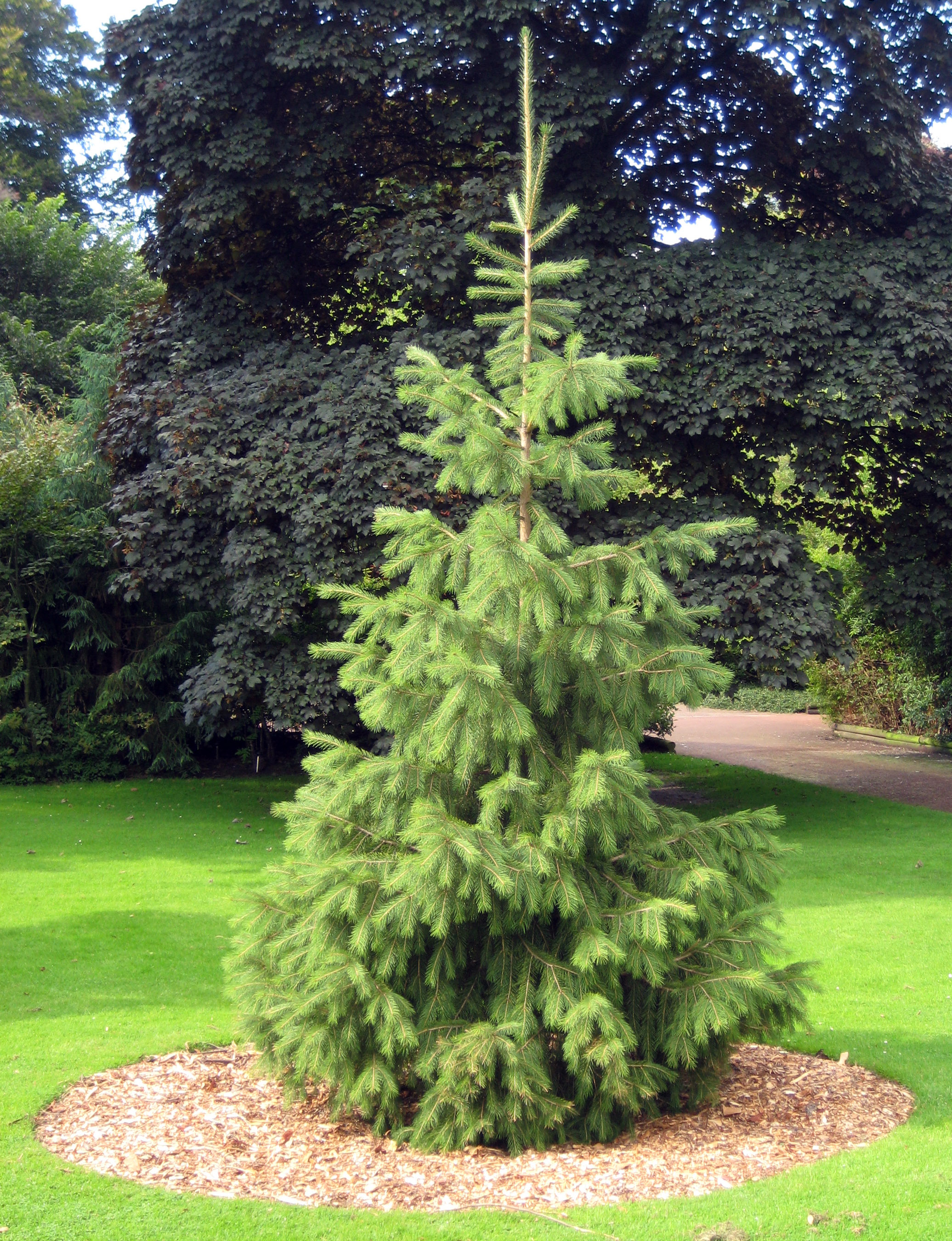
- Abies pindrow
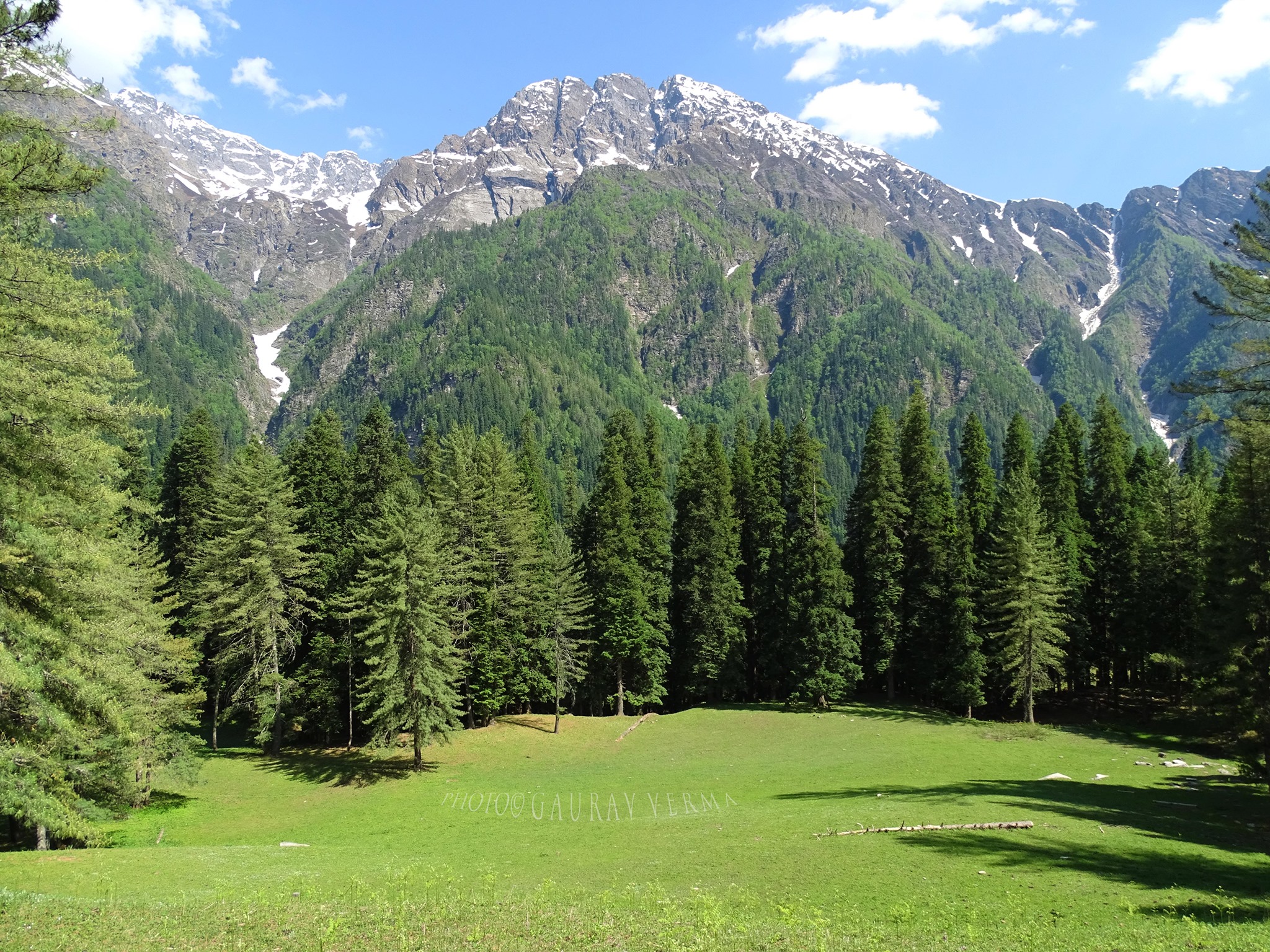
- Quercus leucotrichophora
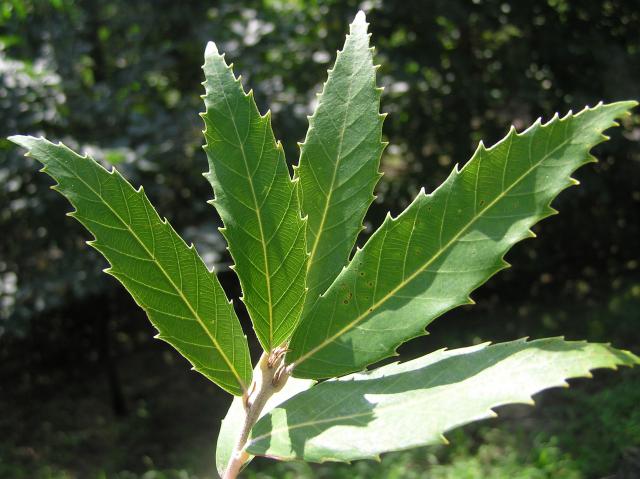
- Dalbergia sissoo

- Other species
Non-Timber Forest Products:

- Grass: For fodder and weaving
- Fruits: For food
- Leaves: Traditional use and weaving
- Bark: Medicinal use and weaving
- Bamboo: Construction and weaving
- Resin and Gum: Various industrial and domestic uses
- Medicinal Plants: Traditional medicine
This classification highlights the ecological diversity of Himachal Pradesh’s forests and their role in supporting local biodiversity and economy.
Himachal Pradesh’s Rich Forest Resources: Medicinal Plants and More
Medicinal Plants in Himachal Pradesh: The state has been actively involved in planting medicinal plants, such as Arjun, Harad, Baheda, and Amla, along with wild fruit-bearing plants to feed monkeys. Between 2013-16, around 1.9 million medicinal plants were planted annually, with an average of 43-48% in subsequent years. Himachal Pradesh’s forest cover, excluding the forest area, spans 68.16% of the total land, with 3163 square kilometers designated as dense forests.
Forest Coverage Goals: The state aims to achieve a 33% forest cover. The “Ek Boota Beti Ke Naam” scheme encourages families to plant trees in their daughters’ names. The state’s Chief Minister, Sukhvinder Singh Sukhu, emphasizes that various agencies and communities will work towards this target.
Forest Classification by Region:
Sub-Mountainous or Sub-Tropical Region:
- Location: Southern part of the state including Shivalik hills and lower Himalayas.
- Key Forest Types: Sal, Khair, Sheesham, Chir Pine, and Dry Deciduous forests.
Mountainous or Temperate Region:
- Location: Upper slopes of lower and middle Himalayas.
- Key Forest Types: Oak, Kharshu, Moru Oak, Deodar, Blue Pine, Fir, Spruce, and Mixed Broadleaf forests.
Sub-Alpine and Alpine Region:
- Location: Upper slopes of lower and middle Himalayas.
- Key Forest Types: High-altitude Blue Pine, Deodar, Spruce, Alder, Birch, Rhododendron, and Alpine Shrubs.
Trans-Himalayan Region:
- Location: Inner dry valleys of main and Trans-Himalayas.
- Key Forest Types: Chilgoza Pine, Dry Deodar, Juniper, and Alpine Shrubs.
Key Flora and Resources:
- Trees: Includes Akoria, Akash Bel, Walnut, Amaltas, Banyan, Chil, Haldia, and more.
- Shrubs: Includes Bhantindu, Dhaid, Kamal, Kural, Thuna, and Tut.
- Herbs: Includes Bhang, Reetha, Toon, Mehendu, and Tunga.
Timber Resources: Includes Cedrus deodara, Pinus roxburghii, Picea smithiana, and more.
Non-Wood Forest Products: Includes grass, fruits, leaves, bark, bamboo, cane, and essential oils for various uses.
Himachal Pradesh’s diverse forest resources and their traditional, medicinal, and commercial uses highlight the state’s rich environmental heritage and ongoing efforts in forest conservation and management.
In Hindi :
औषधीय पौधों से संपन्न हिमाचल प्रदेश: वन संसाधनों की विविधता
औषधीय पौधों का रोपण: हिमाचल प्रदेश में औषधीय पौधों को रोपने की दिशा में निरंतर प्रयास किए जा रहे हैं। इसमें अर्जुन, हरड़, बहेड़ा, और आंवला जैसे पौधे शामिल हैं, साथ ही बंदरों के भोजन के लिए जंगली फलदार पौधे भी रोपे जाते हैं। सरकारी और गैर-सरकारी संस्थाओं द्वारा 2013-14 में 45.30 लाख, 2014-15 में 46.70 लाख, और 2015-16 में 43 लाख औषधीय पौधे लगाए गए। इसके बाद के वर्षों में औसतन 43 से 48 फीसदी पौधे रोपे गए। कुल वन क्षेत्र का 68.16% वनों से ढका हुआ है, जिसमें 3163 वर्ग किलोमीटर क्षेत्र डेंस फॉरेस्ट (सघन वन) है।
फॉरेस्ट कवर का लक्ष्य: हिमाचल प्रदेश में 33% वन आवरण का लक्ष्य निर्धारित किया गया है। “एक बूटा बेटी के नाम” योजना के तहत, परिवार बेटी के जन्म के उपलक्ष्य में एक पौधा लगाते हैं और उसके संरक्षण का जिम्मा लेते हैं। ई-विधान प्रणाली के तहत, हर साल 6096 पेड़ों की कटाई से बचाव होता है।
वन की प्रमुख श्रेणियाँ:
उप-पर्वतीय या उपोष्णकटिबंधीय क्षेत्र:
- भौगोलिक स्थिति: शिवालिक पहाड़ियाँ, दून घाटियाँ और निचले हिमालय की तलहटी।
- प्रमुख वन प्रकार: साल, खैर, शीशम, चीड़, शुष्क पर्णपाती वन।
पर्वतीय या शीतोष्ण क्षेत्र:
- भौगोलिक स्थिति: निचले हिमालय की ऊपरी पहाड़ियाँ, मध्य हिमालय, उच्च हिमालय के निचले हिस्से।
- प्रमुख वन प्रकार: बान, खरसू, मोरू ओक, देवदार, ब्लू पाइन, फर, स्प्रूस, चीड़ पाइन।
उप-अल्पाइन और अल्पाइन क्षेत्र:
- भौगोलिक स्थिति: निचले और मध्य हिमालय की ऊपरी ढलानें, उच्च हिमालय और ट्रांसहिमालय की दक्षिणमुखी ढलानें।
- प्रमुख वन प्रकार: नीला पाइन, देवदार, स्प्रूस, एल्डर, बिर्च, रोडोडेंड्रोन वन, नम अल्पाइन झाड़ियाँ।
ट्रांस हिमालयन क्षेत्र:
- भौगोलिक स्थिति: मुख्य हिमालय और ट्रांस-हिमालय की आंतरिक शुष्क घाटियाँ।
- प्रमुख वन प्रकार: चिल्गोजा पाइन, शुष्क देवदार, जुनिपर, अल्पाइन झाड़ियाँ।
प्रमुख पेड़, झाड़ियाँ और जड़ी-बूटियाँ:
- पेड़: अकोरिया, आकाश बेल, अक्रोट, अमलतास, बरगद, चिल, हल्दिया, हरार, कचनार, काकरे, सेमल, सिंबल, सेरीफल, काइफल, देवदार की विभिन्न प्रजातियाँ, चारे वाले पेड़, बबूल एसपीपी।
- झाड़ियाँ: भटिंडु, धाई, कमल, कुरल, थूना, टुट।
- जड़ी-बूटियाँ: भांग, रीठा, तून, मेहन्दु, तुंगा।
इमारती लकड़ी संसाधन: सेड्रस देवदारा, पिनस रोक्सबर्गी, पी वालिचियाना, पिसिया स्मिथियाना, एबिस पिंड्रो, और अन्य।
चारा और ईंधन लकड़ी: ग्रेविया ऑप्टिवा, मोरस अल्बा, बौहिनिया वेरिएगाटा, बांस, अल्बिजिया चिनेंसिस, ए. लेबेक, रॉबिनिया स्यूडोकेसिया।
गैर-लकड़ी वन संसाधन: घास, फल, पत्तियां, छाल, पशु उत्पाद, बांस, बेंत, घास के रेशे, सोता, आवश्यक तेल और स्थिर तेल, मोम, रंग और टैन, औषधीय पौधे, गोंद और रेजिन, औषधि उत्पादन विनिर्देश, जहर और कीटनाशक, विविध वन उपज।
हिमाचल प्रदेश के इन समृद्ध वन संसाधनों का उपयोग पारंपरिक, औषधीय और व्यावसायिक उद्देश्यों के लिए किया जाता है, जो राज्य की पर्यावरणीय विविधता और संरक्षण में महत्वपूर्ण भूमिका निभाते हैं।
हिमाचल प्रदेश में इमारती लकड़ी संसाधन
हिमाचल प्रदेश के इमारती लकड़ी संसाधन राज्य की अर्थव्यवस्था और पर्यावरण के लिए अत्यंत महत्वपूर्ण हैं। यहाँ के वन क्षेत्रों में विभिन्न प्रकार की उच्च गुणवत्ता वाली लकड़ी मिलती है, जो निर्माण, फर्नीचर, और अन्य औद्योगिक उपयोगों के लिए आवश्यक होती है। राज्य के समृद्ध वन संसाधन और उनके उपयोग की विस्तृत जानकारी निम्नलिखित है:
सेड्रस देवदारा (Cedrus deodara): इस लकड़ी का उपयोग मुख्य रूप से निर्माण और इमारतों में किया जाता है। इसकी मजबूती और टिकाऊपन के कारण यह लकड़ी भवन निर्माण में आदर्श मानी जाती है।
पिनस रोक्सबर्गी (Pinus roxburghii): यह पाइन प्रजाति की लकड़ी उपयोग में लाए जाने वाली प्रमुख लकड़ी है। इसका उपयोग फर्नीचर और अन्य लकड़ी के उत्पादों में किया जाता है।
पी वालिचियाना (Picea wallichiana): इसे स्प्रूस के नाम से भी जाना जाता है। यह लकड़ी हल्की और मजबूत होती है, जो निर्माण और हस्तशिल्प के काम आती है।
पिसिया स्मिथियाना (Picea smithiana): इस लकड़ी का उपयोग फर्नीचर और कागज के उत्पादन में किया जाता है। इसकी गुणवत्ता और ताकत इसे व्यावसायिक उपयोग के लिए उपयुक्त बनाती है।
एबिस पिंड्रो (Abies pindrow): यह देवदार की प्रजाति की लकड़ी है, जो निर्माण और सजावट के काम आती है। इसकी स्थिरता और सुंदरता इसे वांछनीय बनाती है।
ए स्पेक्टाबिलिस (Aesculus spectabilis): इसका उपयोग सामान्य निर्माण और फर्नीचर के निर्माण में होता है। इसकी लकड़ी मजबूत और टिकाऊ होती है।
कप्रेसस टोरुलोसा (Cupressus torulosa): इस लकड़ी का उपयोग सजावटी कामों और निर्माण में किया जाता है। इसकी सुंदरता और दीर्घकालिकता इसे खास बनाती है।
जुनिपरस एक्सेलसा (Juniperus excelsa): इसे जूनीपर भी कहा जाता है। यह लकड़ी विभिन्न औद्योगिक उपयोगों के लिए आदर्श है और अपनी मजबूत विशेषताओं के लिए जानी जाती है।
जे. सेक्वामाटा (J. sequoia): इसे रेडवुड भी कहा जाता है। इसकी लकड़ी की विशेषता यह है कि यह पानी और कीटों से प्रतिरोधी होती है, जिससे इसका उपयोग बाहरी निर्माण कार्यों के लिए किया जाता है।
शोरिया रोबस्टा (Shorea robusta): इस लकड़ी का उपयोग भारी निर्माण और इमारतों के कामों में किया जाता है। इसकी ताकत और स्थिरता इसे आदर्श बनाती है।
क्वेरकस ल्यूकोट्रिकोफोरा (Quercus leucotrichophora): इसे उत्तर भारतीय ओक के नाम से जाना जाता है। यह लकड़ी मजबूत और दीर्घकालिक होती है, जो निर्माण और फर्नीचर में उपयोगी होती है।
क्यू. फ्लोरिबुंडा (Q. floribunda): इस प्रजाति की लकड़ी का उपयोग उच्च गुणवत्ता वाले फर्नीचर और निर्माण कार्यों में किया जाता है।
क्यू. डिलाटाटा (Q. dilatata): इसे दिमागी ओक के नाम से भी जाना जाता है। यह लकड़ी विशेष रूप से फर्नीचर और निर्माण के लिए उपयोग की जाती है।
एस्कुलस इंडिका (Aesculus indica): यह लकड़ी भी निर्माण और औद्योगिक उपयोगों के लिए उपयुक्त मानी जाती है।
एसर एसपीपी. (Acer spp.): एसर प्रजाति की लकड़ी का उपयोग फर्नीचर और सजावटी कामों में होता है।
जुग्लंस रेजिया (Juglans regia): इसे अखरोट के नाम से जाना जाता है। इस लकड़ी का उपयोग उच्च गुणवत्ता वाले फर्नीचर और सजावटी कामों में किया जाता है।
अकेसिया कैटेचू (Acacia catechu): यह लकड़ी औषधीय उपयोगों और निर्माण के कामों में आती है।
डालबर्गिया सिस्सू (Dalbergia sissoo): इसे शिशम के नाम से जाना जाता है। इसकी लकड़ी मजबूत और दीर्घकालिक होती है, जो निर्माण और फर्नीचर में उपयोग की जाती है।
टूना सिलियाटा (Tuna ciliata): इस लकड़ी का उपयोग सामान्य निर्माण और फर्नीचर में किया जाता है।
एलनस नेपलेंसिस (Alnus nepalensis): इसकी लकड़ी भी निर्माण और अन्य उपयोगों के लिए उपयोगी होती है।
उपयोग और महत्व: हिमाचल प्रदेश की इमारती लकड़ी संसाधन विविध उद्देश्यों के लिए महत्वपूर्ण हैं, जिनमें भवन निर्माण, फर्नीचर निर्माण, हस्तशिल्प, और औद्योगिक उपयोग शामिल हैं। इन संसाधनों का समुचित प्रबंधन और सतत उपयोग राज्य की आर्थिक समृद्धि और पर्यावरण संरक्षण के लिए आवश्यक है।
Questions
- In which geographic region of Himachal Pradesh
is the Sub-Mountainous or Sub-Tropical Forest type primarily found?
A. Shivalik Hills
B. Upper Himalayas
C. Lower Alpine Region
D. Trans-Himalayan Valleys
Answer: A. Shivalik Hills
- Which district(s) of Himachal Pradesh fall
under the Sub-Mountainous or Sub-Tropical Forest zone?
A. Shimla and Kullu
B. Chamba and Kinnaur
C. Chamba, Kangra, Mandi, Bilaspur, Solan, and Sirmaur
D. Lahaul and Spiti
Answer: C. Chamba, Kangra, Mandi, Bilaspur, Solan, and
Sirmaur
- Which of the following is a predominant tree
type in the Sub-Mountainous or Sub-Tropical Forest area?
A. Blue Pine
B. Sal
C. Oak
D. Juniper
Answer: B. Sal
- Which tree species is commonly found in the
Mountainous or Temperate Forest area of Himachal Pradesh?
A. Chir Pine
B. Blue Pine
C. Deodar
D. Cedar
Answer: C. Deodar
- Which forest type is characterized by the
presence of Ban Oak and Moru Oak?
A. Sub-Mountainous Forest
B. Mountainous Forest
C. Sub-Alpine Forest
D. Trans-Himalayan Forest
Answer: B. Mountainous Forest
- Which district is not included in the
Mountainous or Temperate Forest area?
A. Shimla
B. Solan
C. Chamba
D. Lahaul
Answer: D. Lahaul
- Which of the following is a prominent tree
species in the Sub-Alpine and Alpine Forest area?
A. Pine
B. Birch
C. Sal
D. Chukrasia
Answer: B. Birch
- What is the primary tree species in the
Trans-Himalayan region of Himachal Pradesh?
A. Chir Pine
B. Juniper
C. Blue Pine
D. Deodar
Answer: B. Juniper
- Which tree is used for medicinal purposes and
is found in the Sub-Mountainous or Sub-Tropical Forest zone?
A. Amaltas
B. Cedar
C. Oak
D. Juniper
Answer: A. Amaltas
- In which forest type would you find the tree
species like Chilgoza Pine and Dry Cedar?
A. Sub-Mountainous Forest
B. Mountainous Forest
C. Sub-Alpine and Alpine Forest
D. Trans-Himalayan Forest
Answer: D. Trans-Himalayan Forest
- Which of the following shrubs is found in the
Mountainous or Temperate Forest region?
A. Thuna
B. Bhutindhu
C. Kural
D. Tuti
Answer: A. Thuna
- Which shrub species is known for its medicinal
use in Himachal Pradesh?
A. Bhutindhu
B. Tuti
C. Kamal
D. Morus Alba
Answer: A. Bhutindhu
- Which herb is used for cleaning and medicinal
purposes in Himachal Pradesh?
A. Bhanga
B. Reetha
C. Tunga
D. Mehndu
Answer: B. Reetha
- Which of the following is a major forest type
in Himachal Pradesh according to Champion and Seth (1968)?
A. Himalayan Dry Temperate
Forest
B. Himalayan Moist Temperate Forest
C. Tropical Evergreen Forest
D. Tropical Deciduous Forest
Answer: B. Himalayan Moist Temperate Forest
- Which district is part of the Sub-Alpine and
Alpine Forest area?
A. Kangra
B. Kullu
C. Chamba
D. Bilaspur
Answer: C. Chamba
- Which type of forest includes species like
Blue Pine, Fir, and Spruce?
A. Sub-Mountainous Forest
B. Mountainous Forest
C. Sub-Alpine and Alpine Forest
D. Trans-Himalayan Forest
Answer: B. Mountainous Forest
- Which tree is primarily used for timber and is
found in the Sub-Mountainous or Sub-Tropical Forest zone?
A. Sal
B. Chir Pine
C. Deodar
D. Oak
Answer: A. Sal
- Which type of forest is characterized by the
presence of high-altitude vegetation such as Rhododendron?
A. Sub-Mountainous Forest
B. Mountainous Forest
C. Sub-Alpine and Alpine Forest
D. Trans-Himalayan Forest
Answer: C. Sub-Alpine and Alpine Forest
- What percentage of the geographical area of
Himachal Pradesh is covered by forest according to the data provided?
A. 27.73 percent
B. 68.16 percent
C. 37.89 percent
D. 52.45 percent
Answer: A. 27.73 percent
- Which of the following is not a tree species
used for timber in Himachal Pradesh?
A. Cedrus deodara
B. Pinus roxburghii
C. Acacia catechu
D. Ficus benghalensis
Answer: D. Ficus benghalensis
- Which district does not fall under the
Trans-Himalayan region of Himachal Pradesh?
A. Kinnaur
B. Lahaul and Spiti
C. Shimla
D. Chamba
Answer: C. Shimla
- Which forest type is found at the lowest
elevations of Himachal Pradesh?
A. Sub-Alpine Forest
B. Mountainous Forest
C. Trans-Himalayan Forest
D. Sub-Mountainous or Sub-Tropical Forest
Answer: D. Sub-Mountainous or Sub-Tropical Forest
- Which of the following is a characteristic
shrub of the Sub-Alpine and Alpine Forest area?
A. Kural
B. Morus Alba
C. Rhododendron
D. Thuna
Answer: C. Rhododendron
- Which of the following herbs is used for its
medicinal properties and is found in Himachal Pradesh?
A. Cannabis sativa
B. Aloe vera
C. Mint
D. Ginger
Answer: A. Cannabis sativa
- Which of the following non-timber forest
products is used for weaving?
A. Bamboo
B. Resin
C. Medicinal Plants
D. Essential Oils
Answer: A. Bamboo
Here’s the clickable list for easy access:


